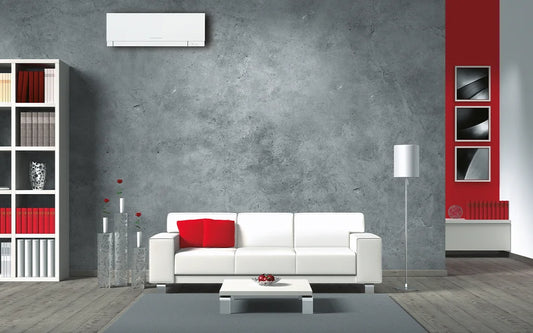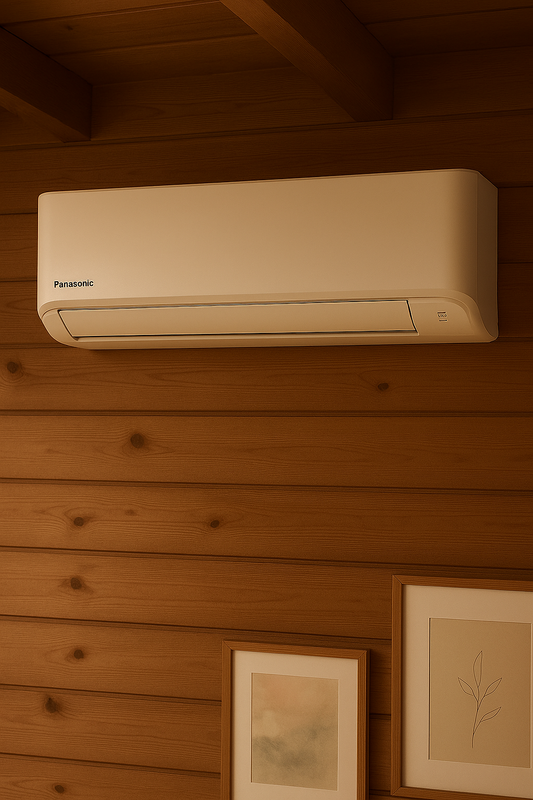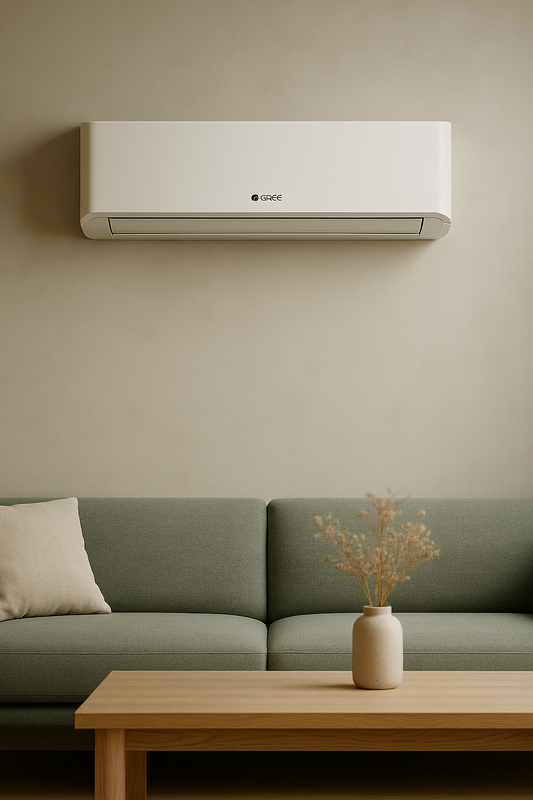Luftvärmepump Kostnad: Allt du behöver veta
Inledning
Luftvärmepumpar har blivit allt populärare som ett kostnadseffektivt och miljövänligt sätt att värma upp bostäder. En av de vanligaste frågorna som uppstår när man överväger att installera en luftvärmepump är kostnaden. I denna artikel kommer vi att utforska olika aspekter av luftvärmepumpars kostnad, inklusive definition, bakgrund, fördelar, användningsområden, relaterade tekniker, vanliga frågor och sammanfattning.
Definition och Bakgrund
En luftvärmepump är en enhet som använder utomhusluftens värmeenergi för att värma upp inomhusutrymmen. Genom att utnyttja principen om värmepumpar kan luftvärmepumpar producera mer värmeenergi än den elektriska energi som förbrukas. Detta gör dem till ett energieffektivt alternativ till traditionella uppvärmningsmetoder.
Fördelar och Användningsområden
Luftvärmepumpar har flera fördelar, inklusive låga driftskostnader, låg miljöpåverkan och mångsidighet. De kan användas för att värma upp bostäder, kommersiella fastigheter och till och med för att producera varmvatten. Dessutom kan vissa modeller även användas för att kyla inomhusutrymmen under varma väderförhållanden, vilket ger en helårsanvändning.
Relaterade Tekniker, Begrepp eller Variationer
Det finns flera olika typer av luftvärmepumpar, inklusive luft-luftvärmepumpar och luft-vattenvärmepumpar. Luft-luftvärmepumpar distribuerar värmen direkt till inomhusluften, medan luft-vattenvärmepumpar använder värmen för att producera varmt vatten för uppvärmningssystem. Dessutom finns det även hybridvärmepumpar som kan kombinera luftvärmepumpens effektivitet med andra uppvärmningsmetoder.
Vanliga Frågor (FAQ)
-
Vad påverkar kostnaden för en luftvärmepump?
Kostnaden för en luftvärmepump kan påverkas av faktorer som storlek på bostaden, energieffektivitet, installationskostnader och val av tillverkare. -
Vad är genomsnittskostnaden för att installera en luftvärmepump?
Genomsnittskostnaden för att installera en luftvärmepump kan variera beroende på geografisk plats och bostadens specifika behov, men det kan vara bra att budgetera mellan 20 000 kr och 40 000 kr. -
Vilka besparingar kan förväntas med en luftvärmepump?
Genom att använda en luftvärmepump kan hushåll förvänta sig att minska sina uppvärmningskostnader med upp till 50%, vilket kan leda till betydande långsiktiga besparingar.
Sammanfattning
Luftvärmepumpar erbjuder en kostnadseffektiv och miljövänlig metod för uppvärmning och kylning av bostäder och kommersiella fastigheter. Genom att förstå de olika aspekterna av luftvärmepumpars kostnad, inklusive dess fördelar, användningsområden och relaterade tekniker, kan konsumenter fatta välgrundade beslut när de överväger att investera i denna energieffektiva uppvärmningslösning.
Installation Costs
When considering the cost of a heat pump, it's important to account for the installation expenses. Factors such as the complexity of the installation, the need for additional ductwork, and any necessary electrical upgrades can impact the overall installation cost. It's advisable to obtain quotes from multiple reputable HVAC contractors to compare costs and ensure a quality installation.
Energy Efficiency and Savings
One of the key long-term benefits of a heat pump is its energy efficiency, which can lead to significant cost savings on heating and cooling bills. Heat pumps can achieve high efficiency ratings, especially in moderate climates, and their ability to provide both heating and cooling can contribute to year-round energy savings.
Maintenance and Lifespan
Understanding the maintenance requirements and expected lifespan of a heat pump is essential for evaluating its overall cost. Proper maintenance, such as regular filter changes and annual professional inspections, can ensure optimal performance and extend the lifespan of the unit. Additionally, being aware of the average lifespan of a heat pump can help homeowners anticipate future replacement costs.
Government Incentives and Rebates
Many governments offer incentives, rebates, or tax credits for the installation of energy-efficient heating and cooling systems, including heat pumps. Researching available incentives from local, state, and federal programs can provide opportunities to offset the upfront cost of purchasing and installing a heat pump.
Local Climate Considerations
The local climate plays a significant role in determining the cost-effectiveness of a heat pump. Areas with extreme temperatures or prolonged periods of sub-zero temperatures may require additional heating sources or a hybrid heating system, potentially affecting the overall cost of implementing a heat pump solution.
Conclusion
By weighing the various cost factors and understanding the long-term benefits, homeowners and businesses can make informed decisions regarding the installation of a heat pump. With careful consideration of installation costs, energy efficiency, maintenance, available incentives, and local climate conditions, the overall cost of a heat pump system can be evaluated in the context of its value as an efficient and sustainable heating and cooling solution.
Additional Considerations
When evaluating the cost of a heat pump, it's important to consider additional factors that can impact the overall expense. These may include the need for supplementary equipment or accessories, such as programmable thermostats, air purifiers, or zoning systems, which can contribute to enhanced comfort and energy efficiency.
Environmental Impact
Besides cost, the environmental impact of a heat pump is a crucial aspect to consider. Heat pumps are recognized for their low greenhouse gas emissions and reduced reliance on fossil fuels, contributing to a greener and more sustainable heating and cooling solution. Understanding the environmental benefits can provide a comprehensive perspective on the value of investing in a heat pump.
Comparative Cost Analysis
Conducting a comparative cost analysis between a heat pump and traditional heating systems, such as furnaces or boilers, can offer insights into the long-term cost-effectiveness of each option. Evaluating factors such as fuel prices, maintenance expenses, and potential future energy regulations can assist in determining the economic advantages of a heat pump over its alternatives.
Manufacturer Warranties and Support
Exploring the warranties and support provided by different heat pump manufacturers is essential for safeguarding the investment. Understanding the warranty coverage, terms, and available support services can help mitigate potential repair or replacement costs and ensure ongoing performance and reliability of the heat pump system.
Professional Consultation
Seeking a professional consultation from HVAC experts or energy efficiency consultants can offer personalized insights into the cost considerations specific to individual properties. Professional assessments can help in determining the optimal heat pump size, performance expectations, and the associated costs tailored to the unique requirements of the heating and cooling system.
Relaterade artiklar
- href="/blogs/kunskapsbank/kopa-luftvarmepump-med-installation-1">Köpa luftvärmepump med installation
- href="/blogs/kunskapsbank/nibe-varmepump-luft-vatten">Nibe Värmepump Luft Vatten: En Effektiv Värmelösning för Ditt Hem
- href="/blogs/kunskapsbank/basta-luftvarmepumpen-for-kyla">Bästa luftvärmepumpen för kyla
Relaterade produkter
- href="https://montigo.se/products/elpaket-bas">Elpaket Bas
- href="https://montigo.se/products/elpaket-plus">Elpaket Plus
- href="https://montigo.se/products/gree-amber-25">Gree Amber 25
- href="https://montigo.se/products/gree-amber-35">Gree Amber 35
- href="https://montigo.se/products/gree-console-35">Gree Console 35



